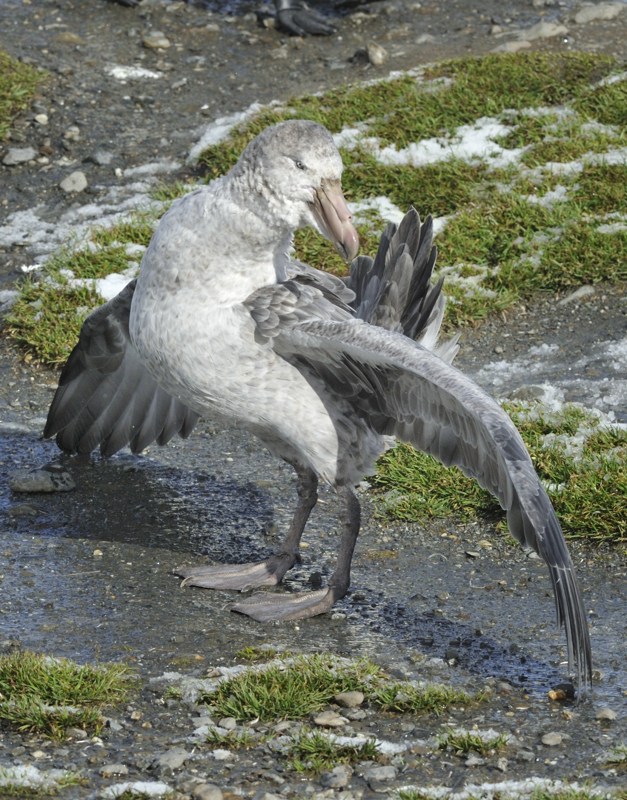Sally Poncet (South Georgia Surveys) and colleagues have published in the journal Polar Biology on the results of a survey of breeding giant petrels Macronectes spp. on South Georgia (Islas Georgias del Sur)*.
The paper’s abstract follows:
“Information on the status of giant petrels breeding at South Georgia was previously based on studies at a small number of the archipelago's breeding sites. Here, we report the results of the first complete archipelago-wide survey of breeding northern Macronectes halli and southern M. giganteus giant petrels in the austral summers 2005/2006 and 2006/2007. We estimate that 15,398 pairs of northern and 8803 pairs of southern giant petrels bred at South Georgia. These are the largest and second largest populations at any island group, representing 71.0% and 17.3%, respectively, of updated global estimates of 21,682 pairs of northern and 50,819 pairs of southern giant petrels. A comparison of counts at locations surveyed in both 1986/1987–1987/1988 and 2005/2006–2006/2007 indicated increases of 74% and 27% in northern and southern giant petrels, respectively, over the intervening 18–20 years. The greater increase in northern giant petrels was likely influenced by the recovery of the Antarctic fur seal Arctocephalus gazella population at South Georgia, which provides an abundant but transient food resource (carrion). Due to allochrony, this provides greater benefits to northern giant petrels. The large, and increasing, population of king penguins Aptenodytes patagonicus at South Georgia also provides a potentially valuable food resource. The flexible and opportunistic foraging behaviour of giant petrels has contributed to their positive population trends. Other, more specialised, seabirds such as albatrosses have declined at South Georgia in recent decades mainly because of problems at sea, compounded by greater predation pressure from the increasing populations of giant petrels.”

A giant petrel displays on South Georgia (Islas Georgias del Sur)*, photograph by Kirk Zufelt
With thanks to Richard Phillips and Anton Wolfaardt.
Reference:
Poncet, S., Wolfaardt, A.C., Barbraud, C., Reyes-Arriagada, R., Black, A., Powell, R.B. & Phillips, R.A. 2019. The distribution, abundance, status and global importance of giant petrels (Macronectes giganteus and M. halli) breeding at South Georgia. Polar Biology doi.org/10.1007/s00300-019-02608-y.
John Cooper, ACAP Information Officer, 05 December 2019
*A dispute exists between the Governments of Argentina and the United Kingdom of Great Britain and Northern Ireland concerning sovereignty over the Falkland Islands (Islas Malvinas), South Georgia and the South Sandwich Islands (Islas Georgias del Sur y Islas Sandwich del Sur) and the surrounding maritime areas.

 English
English  Français
Français  Español
Español